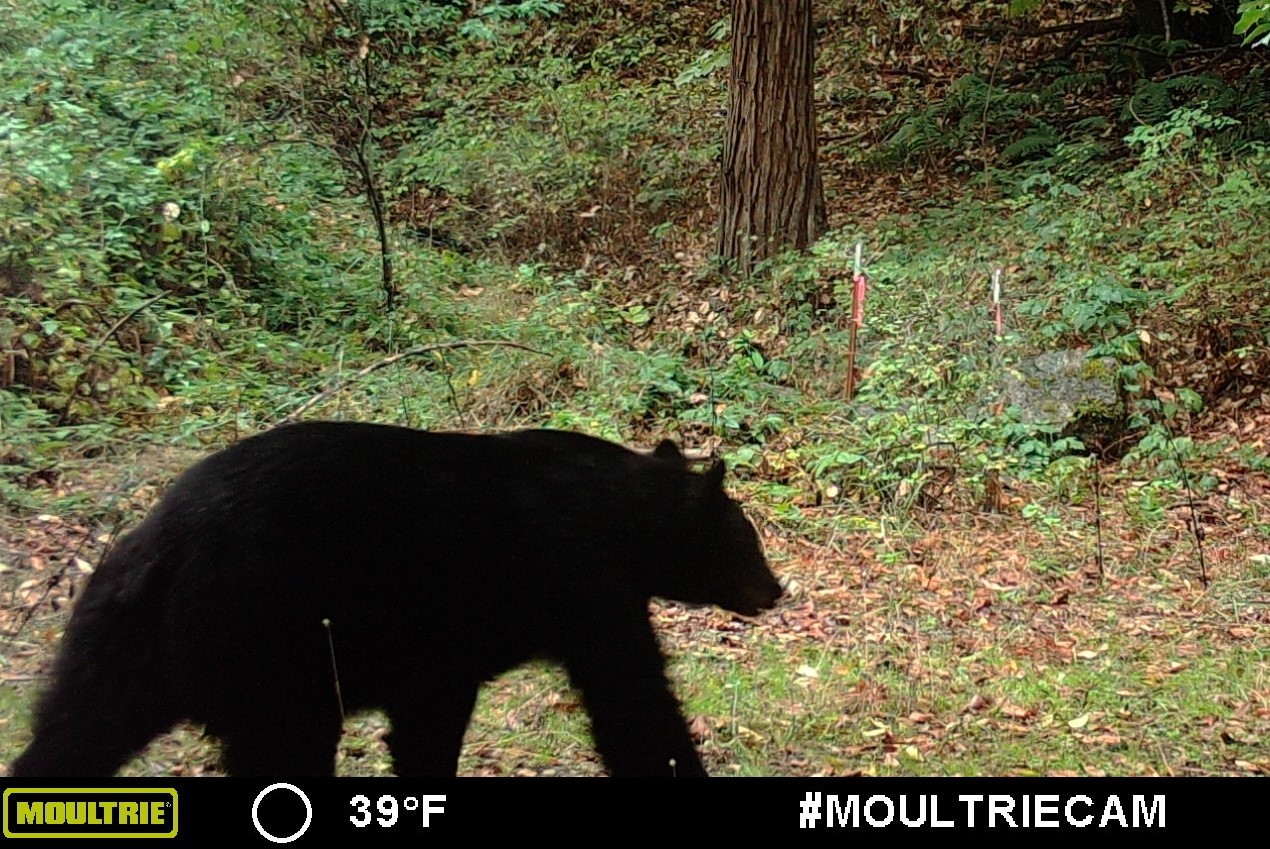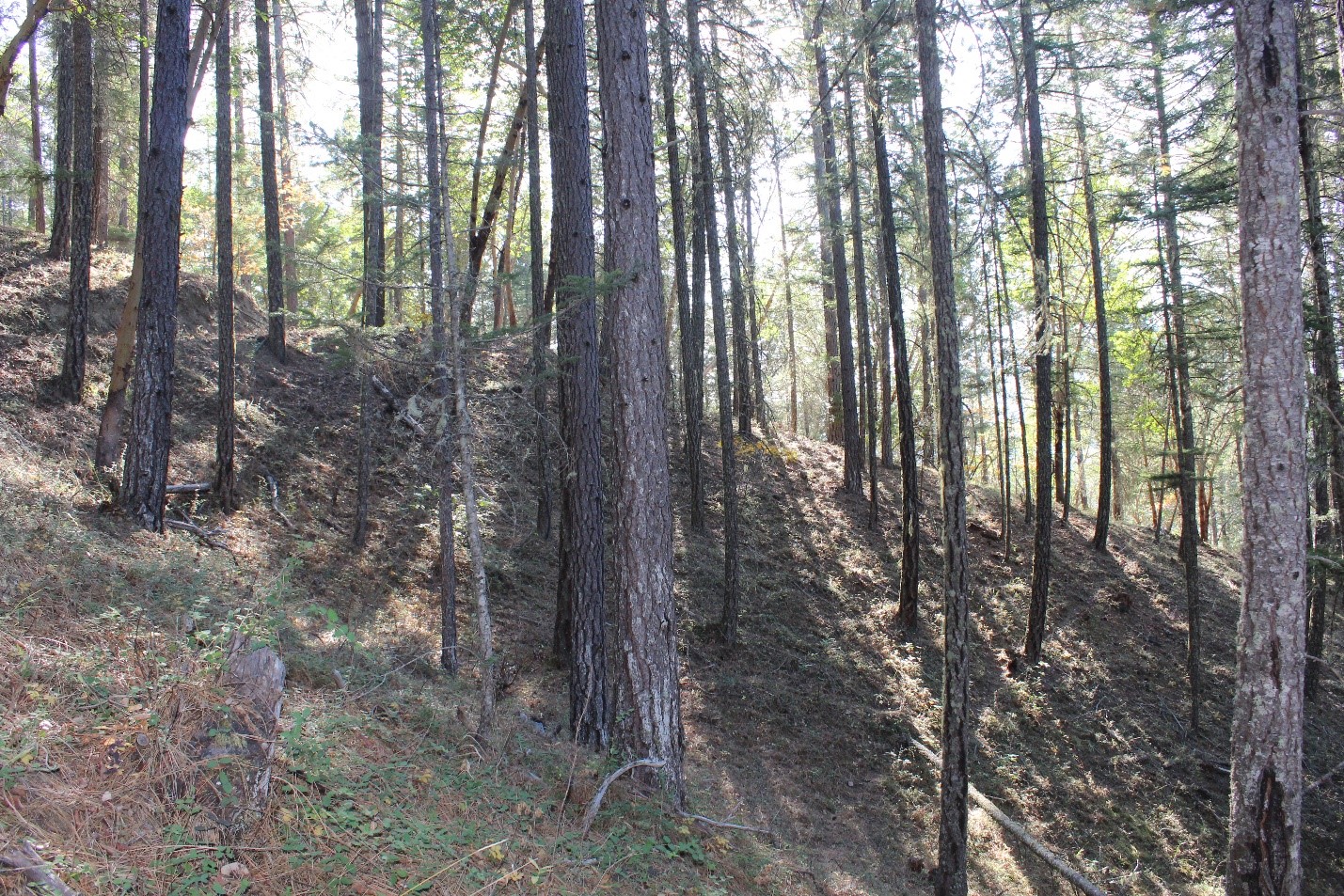By Max Bennett, Extension Forestry and Natural Resources Program, OSU Extension, Central Point.
Note: The Collins Demonstration Forest was first announced in January 2019 but many have not heard much about it yet. Here’s the story and an update on current activities.

I’m thrilled to announce the creation of the new 167 acre Collins Demonstration Forest, thanks to an incredibly generous donation from Bill and Marion Collins to the OSU College of Forestry. Many local woodland owners know Bill and Marion and have visited their lovely property near Gold Hill. If you haven’t been there, this is a remarkably diverse woodland that contains many of the features of SW Oregon forests in a microcosm: Cool, productive Douglas-fir stands on north slopes and hot and dry pine and oak stands on south slopes. Seasonal creeks, lush riparian areas, oak savannah, ceanothus brushfields, large sugar pines – it’s a 167 acre tract that has a bit of everything. This includes lots of wildlife such as deer, foxes, quail, mountain lions and plenty of black bears. Oh yeah, and a bit of poison oak.

As Bill tells it, it all started with a visit to the Josephine County fair almost 40 years ago. Bill and Marion had purchased 160 acres on the Right Fork of Sardine Creek in 1969 and dabbled in ranching for a few years, without too much attention to the surrounding forestland. At the fair Bill met Extension Forester Allan Campbell and a local landowner and roadbuilder, Orville Camp. The idea of managing a woodland for fun and profit came into being. Bill hired Orville to build an extensive network of roads throughout the property, paid for by the timber harvested in the right of way. This provided access and allowed trees to be removed with a tractor and farmi winch without ever leaving the road.
With the help of pioneering woodland owner and manager John Sherck, Bill carefully tended his stands with an eye for improving forest health. Defective trees or those with poor growth were removed, and the healthiest and best growers were left. Some large trees with insect or disease problems, or that were growing poorly, were selectively removed. Logs were carefully merchandized, with a few loads going to the mill in most years and smaller material converted to posts and poles and firewood. Over time, this approach maintained what Bill calls an “all-aged, all species” forest with a steady stream of products, revenue, and forest benefits. He also took advantage of cost share programs and completed various non-commercial thinning and fuel hazard reduction projects which helped reduce the risk of high severity wildfire.
Today, the forest is healthy, diverse, and productive. Bill and Marion’s sustained and careful stewardship has been recognized with a Jackson County Tree Farmer of the Year award and a John Black Lifetime Achievement award.

To be sure, there are challenges. Several years of drought have increased populations of bark beetles and wood borers, and the steep ground poses difficulties for forest operations. High intensity wildfire is an ever-present threat. But it’s the same for most forest properties in this region.
About 18 months ago, Bill and Marion approached me with the idea of donating the property to OSU for the benefit of the local Forestry and Natural Resource Extension program. Needless to say, I was extremely excited! I have seen how much demonstration forests have benefitted other local Extension programs. These are sites for real world, hands-on education via classes, tours, demonstrations, and applied research. And in many ways this would be a continuation of what was already happening at the Collins forest, as Bill and Marion have hosted countless tours and classes there over the years.
Going from an idea to execution proved to be lengthy and sometimes challenging process. As Bill said, “I never knew it was so hard to give stuff away!”
The property is now part of the OSU Research Forest system. The intent is to hold on to and manage it as a working forest, much as OSU has done with the Obertueffer tract in eastern Oregon for more than 20 years and counting. I’ll be actively involved in management, in collaboration with OSU Research Forest staff.
To date we have installed 50 permanent plots to monitor forest conditions and have updated the forest management plan. A bark beetle infestation demanded immediate attention last winter (see this article). Road maintenance and thinning projects are on-going. We’ve had high school students out collecting data as part of our Student Watershed Assessment Teams (SWAT) program. I’m excited about establishing some pollinator plantings and monitoring use of the forest by native bees, and planting some blister rust-resistant sugar pine. I expect there will be many opportunities down the road for active involvement in projects by volunteers, ranging from students to woodland owners.
My hope is that this Demonstration Forest will be a resource for the whole SW Oregon woodland owner community. Stay tuned for updates and opportunities to get involved.





















